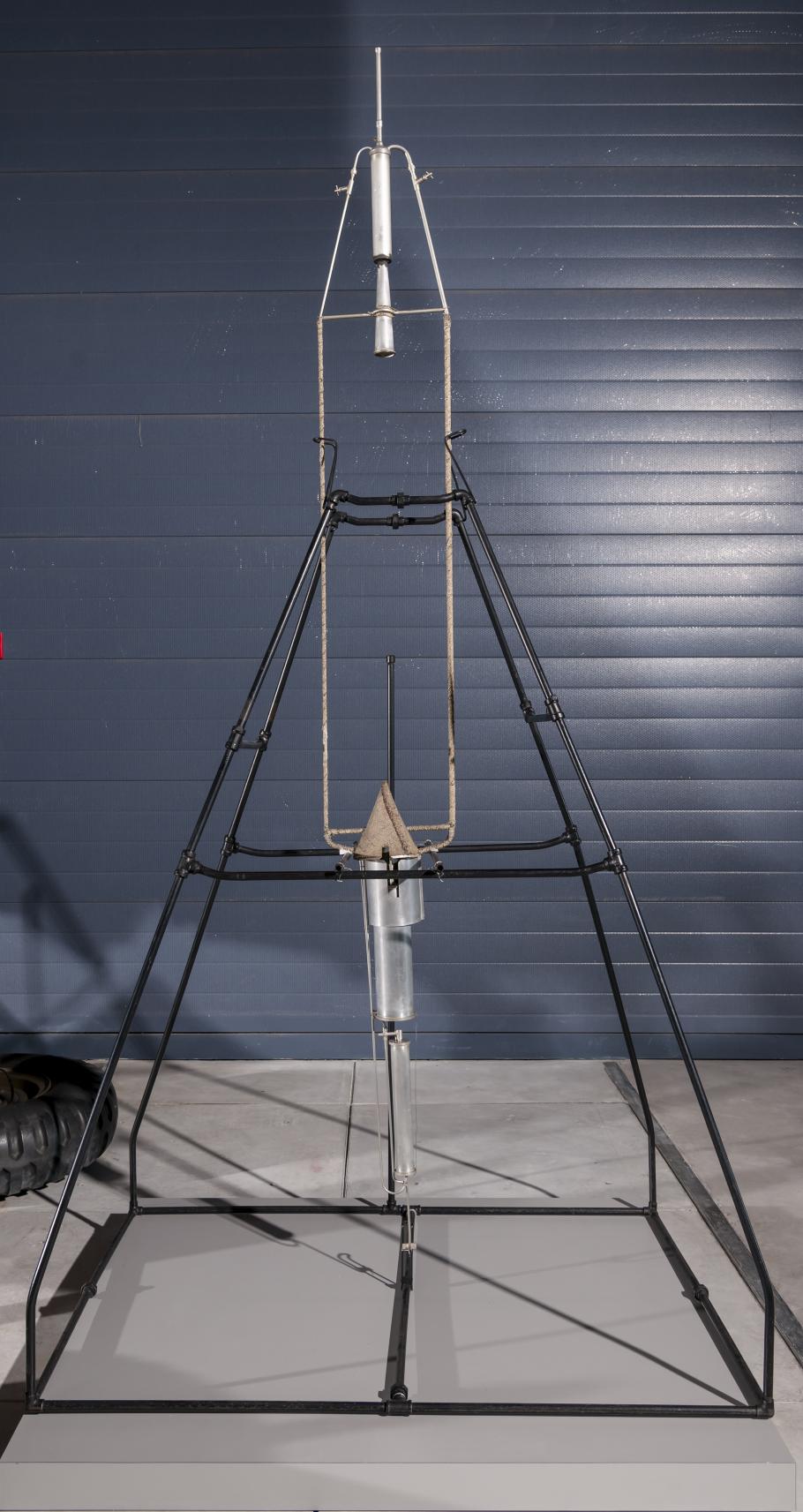first liquid fueled rocket launched by robert h goddard
Story
Robert Goddard and the 1st Liquid-Propellant Rocket
Ninety years ago today, on March 16, 1926, Robert H. Goddard (1882-1945) launched the world's first liquid-propellant rocket. His rickety gadget, with its combustion chamber and nose on transcend, burnt-out for 20 seconds before consuming enough liquefiable oxygen and gasoline to rhytidoplasty itself off the launch rack. The rocket salad took off from a snowy field outside Worcester, Massachusetts, stretch a height of about 12.5 meters (41 feet) and a distance of 56 meters (184 feet). It was smashed on impact. Goddard, his wife Esther, and a couple of assistants from Mark Clark University, where he was a physics professor, were the only witnesses.



This issue did not even micturate the local newspapers; indeed the reticent prof kept it secret for a decade. He told only a couple of people and, after a couple of weeks, Charles G. Abbot, the theater director of the Smithsonian Uranology Observatory (and the institution's Secretair afterwards 1928). The Smithsonian had funded Goddard since 1917, in the hope that his rocket could lift instruments above the aura—the observatory's main program was measuring star variability and output. In January 1920, the Institution had inadvertently made Goddard world-noted when it published his fugitive, often mathematical treatise, A Method acting of Reaching Extreme Altitudes. A Smithsonian press release, protracted lost, noted his marriage proposal to striking the night side of the Moon around with a rocket carrying flash powder. The story spread quickly around the world—a scientist had legitimized the mind that Moon move out might flat be possible. But the press flap besides produced a dispense of sensationalism. Volunteers wrote to Goddard asking to unite the crew of his close at hand lunar navigate. Afterward he was not reluctant thereafter to talk to the press in systemic terms, merely he remained tightlipped about his technical experiments. He was afraid others might steal his inventions, as he was convinced atomic number 2 was the first person in the world to imagine how to constitute spaceflight feasible. His paranoia only enlarged after the German distance enthusiasts became dynamic in the 1920s. In 1930, Goddard received greater funding when famed aviator Charles Lucky Lindy intervened with the Solomon Guggenheim foundation. The Kenneth Clark University professor spent most of the 1930s in Roswell, New Mexico, building and launching much larger rockets. When the Smithsonian, Lindbergh, and Harry Guggenheim pushed Goddard into publishing another report in 1936, he finally discovered the 1926 launch. In time, as impressive as some of his work in Roswell was, helium continued to fend the entreaties of his funders to seek help when his promises to reach the upper atmosphere never materialized. In fact, Goddard's liquid-propellant rocket work turned out to be close to a dead-end because he was loth to share it with anyone. Information technology was the Germans who made the breakthrough to large-weighing machine rocketry with the V-2. Goddard went to his deathbed convinced that the Nazis had taken their technology from him. His real importance did not turning out to be inventing liquidity-propellant rocketry, although no same can take his first away. He inspired others, however, to believe that space go would happen if rocketry was developed. Retired National Transmit and Space Museum conservator Frank Wintertime has shown the circular impact of A Method of Reaching Extreme Altitudes. Almost straight off, science-fiction, movies, and non-fable accounts incorporated the projectile as the fundamental technology for space travel. Before 1920, it was only unrivalled among many ideas and fantasies. The traditional gunpowder rocket salad was unimpressive and the laws of physics were widely misunderstood. Afterward Goddard's publication, and that of unusual pioneers in Soviet Russia and the German-speaking world, judgement began to change. Henry Martyn Robert Goddard thus, just about in spite of himself, paved the way for us to escape the Earth, just as he had long dreamed.
first liquid fueled rocket launched by robert h goddard
Source: https://airandspace.si.edu/stories/editorial/robert-goddard-and-first-liquid-propellant-rocket
Posting Komentar untuk "first liquid fueled rocket launched by robert h goddard"